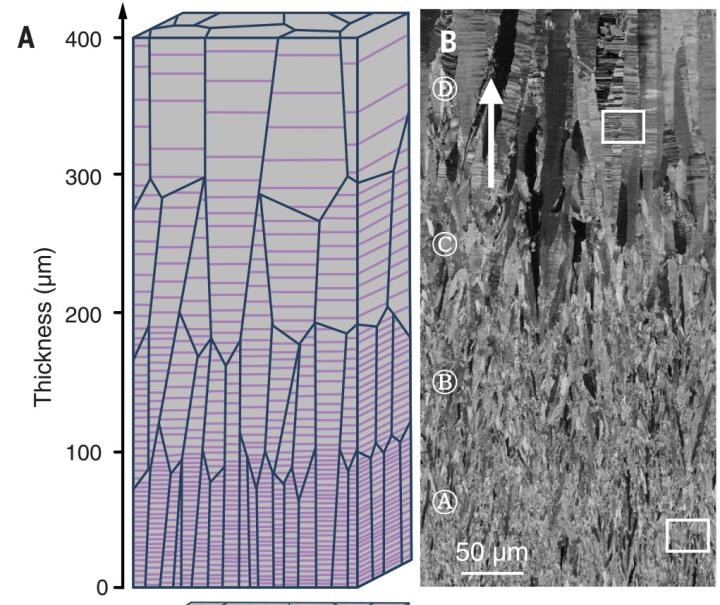Nov 5 2018
A research team from Brown University and the Institute of Metals Research at the Chinese Academy of Sciences has discovered a new method to apply nanotwins to make stronger metals.
 Nanotwins have been shown to improve strength and other properties of metals. A new study shows strength can be further improved by varying the spaces between nanotwins. (Image credit: Gao Lab/Brown University)
Nanotwins have been shown to improve strength and other properties of metals. A new study shows strength can be further improved by varying the spaces between nanotwins. (Image credit: Gao Lab/Brown University)
Nanotwins are very small linear boundaries present in the atomic lattice of a metal and have analogous crystalline structures on both sides.
In a paper published in the journal Science, the team demonstrated that the spacing between twin boundaries, when compared to retaining consistent spacing throughout, creates significant enhancements in the strength of a metal and the rate of work hardening—the degree to which a metal strengthens upon deforming.
This work deals with what’s known as a gradient material, meaning a material in which there’s some gradual variation in its internal makeup. Gradient materials are a hot research area because they often have desirable properties compared to homogeneous materials. In this case, we wanted to see if a gradient in nanotwin spacing produced new properties.
Huajian Gao, Professor, Brown’s School of Engineering.
According to Huajian Gao, a professor in Brown’s School of Engineering who co-headed the work, the study could point toward a novel manufacturing method for high-performance materials.
Along with his colleagues, Gao has already demonstrated that the performance of material can be improved by nanotwins themselves. For instance, nanotwinned copper has been demonstrated to be considerably stronger when compared to the standard copper, with a unique high resistance to fatigue. However, this is the first-ever study to examine the impacts of variable nanotwin spacing.
Using four separate components, each with varied nanotwin boundary spacing, Gao and his coworkers successfully developed copper samples. The nanotwin boundary spacings range from 29 nanometers between boundaries to 72 nanometers. Furthermore, the developed copper samples contained various combinations of the four components organized in different orders across the sample thickness. Next, the team not only tested the strength of each composite sample but also tested the strength of each of the four components.
These tests demonstrated that all the composites were stronger when compared to the average strength of the four components from which they were constructed. Interestingly, one of the composites was found to be stronger than the strongest of its constituent components.
To give an analogy, we think of a chain as being only as strong as its weakest link. But here, we have a situation in which our chain is actually stronger than its strongest link, which is really quite amazing.
Huajian Gao, Professor, Brown’s School of Engineering.
Other tests demonstrated that compared to the average of their constituent components, the composites also possessed higher rates of work hardening.
To gain a better insight into the mechanism behind these increased performances, the team then applied computer simulations of their samples’ atomic structure under strain. The metals, at the atomic level, react to the strain via the movement of dislocations, which are line defects in the crystalline structure where atoms are forced out of place. A metal’s strength is established by the way in which such dislocations grow and communicate with one another.
The computer simulations showed that the dislocations’ density is relatively higher in the gradient copper when compared to a normal metal.
“We found a unique type of dislocation we call bundles of concentrated dislocations, which lead to dislocations an order of magnitude denser than normal,” said Gao. “This type of dislocation doesn’t occur in other materials and it’s why this gradient copper is so strong.”
According to Gao, while the researchers employed copper in this work, nanotwins can also be created in other metals. Hence, nanotwin gradients also have the potential to enhance other metals’ properties.
We’re hoping that these findings will motivate people to experiment with twin gradients in other types of materials.
Huajian Gao, Professor, Brown’s School of Engineering.
Other study authors were Zhao Cheng, Haofei Zhou, Qiuhong Lu, and Lei Lu. The U.S. National Science Foundation and the National Natural Science Foundation of China funded the study.